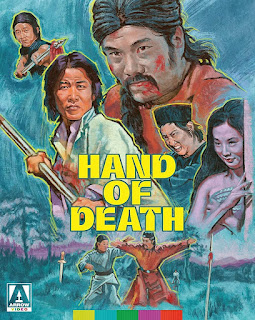Daiei Gothic - Japanese Ghost Stories
While other countries tried to duplicate Hollywood’s success by lifting ideas wholesale, Japan’s approach to cinema was similar to their modernization in general, cherry-picking elements that had broad appeal but retaining their distinct cultural identity. Unlike Italy which relied heavily on exports playing throughout Europe, Japan’s relatively closed market meant that were making films mostly for themselves. And their attempts at the burgeoning gothic horror genre in the 1960s stand as unique expressions of common folk tales amplified by new cinematic techniques
The Ghost of Yotsuya (1959) is a curious mix of chanbara – or samurai film – and straight-up monster movie. First performed as a kabuki play, the film remains a very set-bound, staged production for almost the entire running time as it tells the story of Oiwa, the scorned wife of Tamiya who leaves her to marry into a more successful family. But after Oiwa’s death, her spirit returns to punish all those responsible for her demise. The formal approach may be a turn off to some for the first ¾ or so, but the final act is as colorful and cleverly staged as anything Hammer had to offer at the time.
If The Snow Woman (1968) seems familiar, it’s also one of the stories featured in Kwaidan, an omnibus of Japanese folktales released in 1964. But director Tokuzo Tanaka does a brilliant job of stretching out the plot and adding some terrifying twists. Apprentice sculptor Yosaku narrowly escapes death by promising the titular snow demon that he’ll never speak of their encounter. But after marrying and starting a family, he begins to get comfortable with his second-life. And the secret is never far from his lips. Created through unsettling make-up and camera tricks, the Snow Woman herself still a shocking sight made even more so by familiar music cues from frequent Godzilla composer Akira Ifukube. Tanaka shoots the film with a nightmarish poetry that works equally well as fantasy, drama or horror. Take your pick.
But perhaps the most well-rounded of the bunch is The Bride of Hades (1968) in which a lonely ghost, Otsuyu, attaches herself to an equally lonely schoolteacher, Shinzaburo, during the 13-day festival in which the barrier between the living and dead is weak. As their love affair grows stronger, Shinzaburo himself becomes weaker, called to join his lover in the spirit world. Constructed almost like a Paramount chiller from the ‘40s, The Bride of Hades balances the more dated elements of the story with comic relief and side characters in the form of a pair of greedy ghost con artists. But when the scares come, they are executed with an imaginative combination of lighting, performances and wire work that could only come from Japan.
It's hard to name a more enjoyable release this year than Radiance’s Daiei Gothic three-disc set, particularly as it will be first-time viewing for many. Boasting new 4K restorations, interviews, commentaries, trailers, two visual essays and a sizable collector’s booklet it’s one of those display items that won’t gather too much dust on the shelf.




Comments
Post a Comment